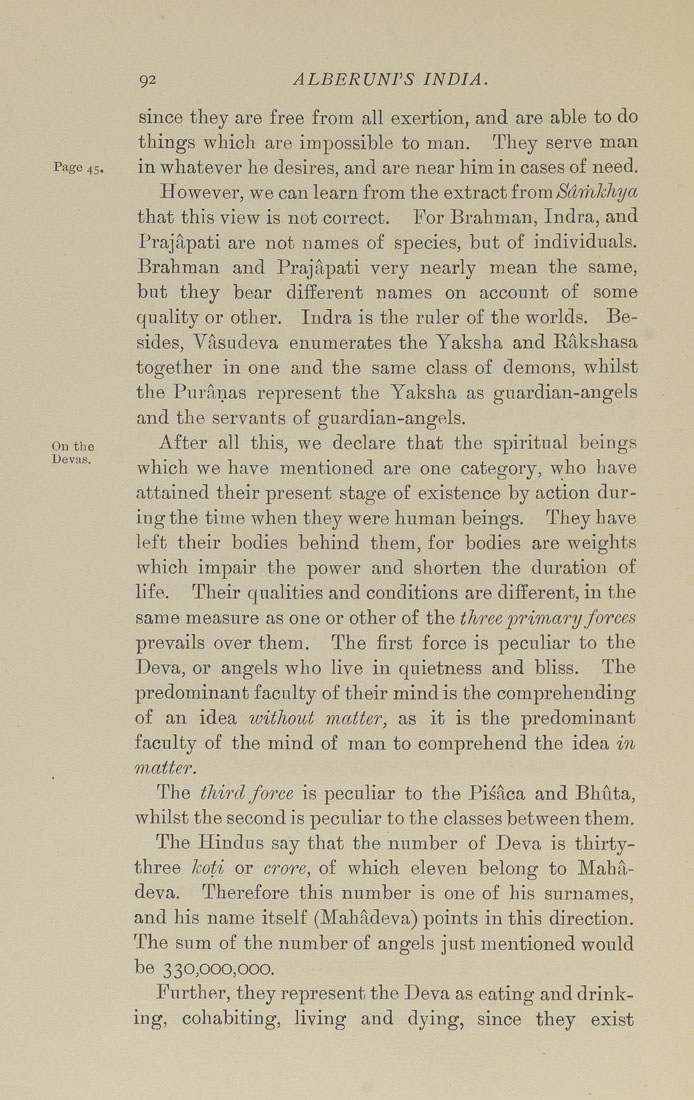Bīrūnī, Muḥammad ibn Aḥmad, Alberuni's India (v. 1)
(London : Kegan Paul, Trench, Trübner & Co., 1910.)
|
||
|
|
|
|
| Page 92 |

Devas. 92 ALBERUNPS INDIA. since they are free from all exertion, and are able to do things which are impossible to man. They serve man Page 45. in whatever he desires, and are near him in cases of need. However, we can learn from the extract from Sdmkhya that this view is not correct. For Brahman, Indra, and Prajapati are not names of species, but of individuals. Brahman and Prajapati very nearly mean the same, but they bear different names on account of some quality or other. Indra is the ruler of the worlds. Be¬ sides, Vasudeva enumerates the Yaksha and Rakshasa together in one and the same class of demons, whilst the Puranas represent the Yaksha as guardian-angels and the servants of guardian-angels. On the After all this, we declare that the spiritual beings which we have mentioned are one category, who have attained their present stage of existence by action dur¬ ing the time when they were human beings. They have left their bodies behind them, for bodies are weights which impair the power and shorten the duration of life. Their qualities and conditions are different, in the same measure as one or other of the three primary forces prevails over them. The first force is peculiar to the Deva, or angels who live in quietness and bliss. The predominant faculty of their mind is the comprehending of an idea without matter, as it is the predominant faculty of the mind of man to comprehend the idea in matter. The third force is peculiar to the Pisaca and Bhuta, whilst the second is peculiar to the classes between them. The Hindus say that the number of Deva is thirty- three koti or c7'ore, of which eleven belong to Maha¬ deva. Therefore this number is one of his surnames, and his name itself (Mahadeva) points in this direction. The sum of the number of angels just mentioned would be 330,000,000. Further, they represent the Deva as eating and drink¬ ing, cohabiting, living and dying, since they exist |
| Page 92 |







